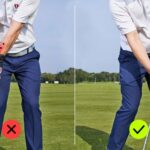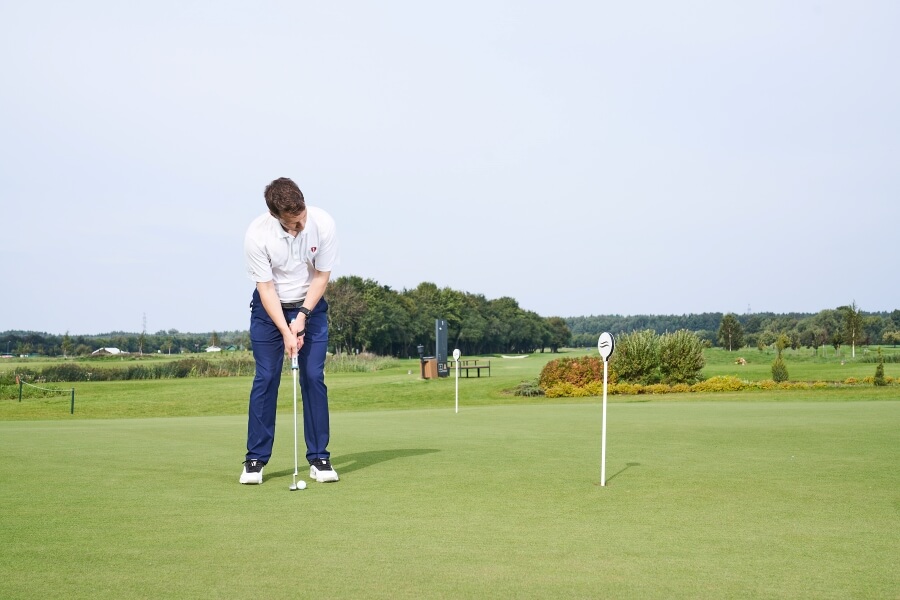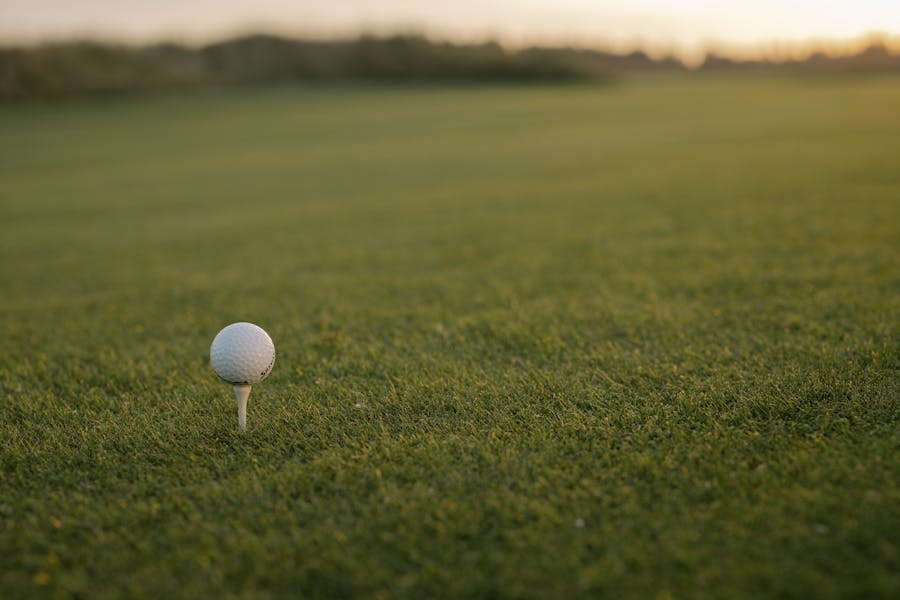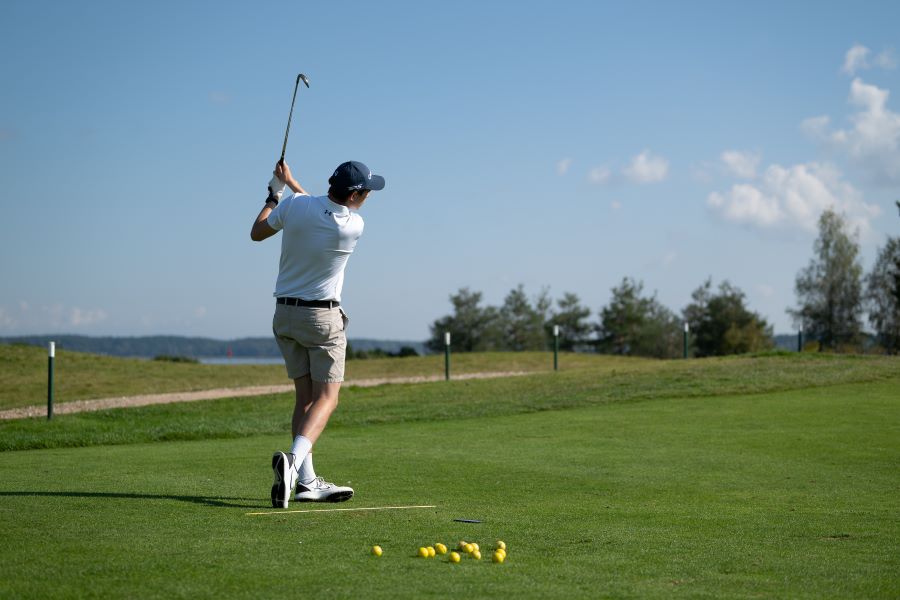How to Hit More Greens in Regulation: Proven Tips, Strategies & Drills That Work
Hitting more greens in regulation comes down to one thing: being able to hit iron cleanly and consistently. Not just short iron, all irons.
More than 90% of your approach shots will be with an iron, and if you’re confident, you can make crisp contact, you will hit more greens.
To improve your contact, here are a few tips that pros and advanced golfers already know. Some tips are easy, while some may require some getting used to.
There are also some drills to complement the tips, so you have a complete understanding of what it takes to hit more greens in regulation.
Hit More Greens in Regulation (Key Takeaways)
If you’re in a rush, be sure to review these key takeaways to give you a basic idea of how to hit more greens in regulation.
- Don’t assume perfect strikes and take more club to avoid coming up short.
- Create your own distance chart based on different clubs and swings.
- Focus on an aiming spot that allows for roll, and a secondary aiming spot just in front of you to align your body.
- Control the club face with stable and optimized wrist positions.
- Develop and stick to a solid pre-shot routine that prepares you the same way for each shot.
Contents
Actionable Tips to Help You Hit More Greens in Regulation
Like many aspects of golf, having a plan is the best way to set yourself up for success.
When trying to improve your greens in regulation, there are a few tips that will expedite the process and give you the confidence to hit greens more often.
To hit more greens and control your distances better, consider booking golf lessons near you focused on iron play and consistent ball striking.
Choose the Smarter Club
Most greens are missed short or short-right because recreational golfers swing a club that requires a perfect strike. Take one more club and make a smoother swing to reduce curve and distance loss on slight mishits.
Play to the big part of the green unless you have a flat lie, no wind, and a clear shot. Build decisions around carry and roll out, not just total distance.
If your perfect 7-iron is 155, use a 6-iron for a stock 150–155 and swing at 80–85% effort.
Track your dispersion (left/right and short/long) and aim so the entire pattern covers the green, not the flag. When in doubt, favor the long side over the short side and the high side away from the biggest penalty.
Build a Personal Distance Matrix
Accuracy improves when your brain trusts how far the ball flies. Create stock yardages for full and partial swings and practice them weekly.
Use predictable, repeatable feels instead of “hit it harder.”
- Map carry yardages for every iron and three wedge lengths (e.g., 9–3, chest–chest, full), then write them on a card.
- Standardize tempo and swing length markers. Use the built-in metronome feature on Hackmotion Pro to groove the same tempo for all swings.
- Subtract ~2 yards per 10°F colder than your baseline and into the wind, club up and swing smoother.
- Add a go-to 3/4 “stock shot” for each iron—less speed, lower flight, tighter dispersion.
Aim with Intention
Most misses begin before you swing. Separate your target (where you want the ball to finish) from your start line (where you want it to begin, given your shot shape). Set your body to the start line, not the flag.
Pick an intermediate spot 2–3 feet ahead on your start line and align the clubface first to it, then feet/hips/shoulders. Commit to one-shot shape on approach shots; aim accordingly so your curve uses the green’s width.
On the course, always aim away from the big miss. If you typically miss right, start left-center of green. Knowing your tendencies and playing to them rather than trying to fight them will help you hit more greens in regulation.
Stabilize the Club Face
Face angle at impact dominates the start direction with irons. You can reduce last-second flipping by managing the wrists and the rate of face rotation.
Try to feel the lead wrist moving from slightly extended (cupped) at the top toward flat/slightly flexed (bowed) into impact.
- Hit “hold-off” finishes: Use a shorter follow-through with the logo of the glove facing the target longer.
- Use foot powder spray on the face to find center strikes: During practice, spray the face of your irons and then make adjustments to your ball position and posture until the mark centers.
- HackMotion face-control drill: set a narrow biofeedback range for lead wrist flexion from last parallel to impact and rehearse half-swings that keep the wrist within that window. Target consistent wrist pattern swing-to-swing to produce repeatable face angles.
Control Trajectory to Control Distance in Wind and Pressure
Higher shots magnify the curve and mis-hits. A lower, flighted iron with more club and less speed is often the green-hitting choice.
Club up, move the ball back one ball, keep the pressure slightly forward, and make a 3/4-length swing. Think “less loft at impact” via forward shaft lean and body rotation, not extra hand action.
If you’re into the wind, swing smoother to keep spin manageable. For downwind shots, fly it lower to avoid hot landings.
Build a Repeatable Pre-Shot Routine
Consistency grows from a consistent process. Use the same routine to calm speed, confirm aim, and learn from outcomes.
- Wind/lie/yardage
- Pick the center or the fat side of the target
- Commit to shape
- Align the clubface to the intermediate spot
- One rehearsal of tempo and finish
- Swing!
After each shot, note strike, start line, and curve; adjust aim or club, not your entire swing.
Random practice: on the range, simulate the course—change target and club every ball; track “greens hit” in practice and imagine your course management system.
Drills to Help You Hit More Greens in Regulation
Accuracy, consistency, and clean contact are paramount for hitting more greens in regulation.
These drills address those aspects specifically and should be staples of your practice routine if approach shots are your priority.
Low Point Drill
The best part about this drill is that it helps you improve while also giving you feedback on all your swings. You can also easily experiment with minor changes and know right away whether they are beneficial.
With a couple of balls and 15 minutes on the range, you can optimize your low point to make clean contact and hit more greens.
- Video Timestamp: 1:11 – 7:10
Low Point Drill – Step by Step
- Set up two golf balls on either side of the ball you’re about to hit. The two balls should be about four inches in front of and behind your target ball and just outside your swing path, so you don’t hit either of the two balls.
- Before hitting your target ball, ensure it’s right in the middle of the other two balls. This is how you will use them as a reference to see where the low point of your swing really is.
- Take a few practice swings by adjusting your weight between your lead and back foot. This will help you dial in your ideal low point.
- After you hit a ball, check to see where the divot starts. If it starts forward of middle, then you’re on the right track.
Towel Compression Drill
Once you know your low-point tendencies, you can work to refine them with this towel drill. This is more of a test than it is a drill, and with small adjustments, it can help you improve over time.
All you need is a small golf towel and a small bucket of balls. This can even be done on a mat if you can’t find a real grass range.
- Video Timestamp: 1:05 – 3:45
Towel Compression Drill – Step by Step
- Lay down a small golf towel about six to eight inches behind the ball you’re about to hit.
- Take your normal address and iron swings while striking the ball, but not the towel.
- The towel acts as a visual representation to improve your ball striking more subconsciously.
- As you get better, you can move the towel closer to the ball to really test your skills.
Body Rotation and Prevent Wrist Flipping
Wrist flipping will hurt more than just your greens-in-regulation stats. It’s a common problem among many golfers, both new and experienced.
Using Hackmotion is the quickest and most efficient way to eliminate that from your game, but the old school way uses a small basketball or volleyball. It may sound strange at first, but this drill will help you control your wrists and rotate your body smoothly through the impact zone.
- Video Timestamp: 0:55 – 3:46
Body Rotation and Prevent Wrist Flipping – Step by Step
- Take your usual stance with a mid-iron and address a ball.
- Place a small basketball or volleyball between your forearms and keep it there.
- Take half or three-quarter swings that are in control enough to keep the ball in place.
- You can hit balls with this drill; just start slow to train your wrists and body to work together while keeping the basketball between your forearms.
Casting Drill
The final drill you need to hit more greens in regulation works on your downswing. A consistent downswing is often ruined by casting.
This is when you release your wrists too early, and it can be a complex problem for recreational golfers to understand. Using this Hackmotion drill takes all the guesswork out of training, and the app shows you exactly what you are doing and what you should be doing.
HackMotion Casting Drill – Step by Step
- Start by calibrating your Hackmotion, then open the Casting Drill feature in the Hackmotion app.
- Follow the on-screen prompts to get into a neutral setup position. Once you get a green approval screen and vibration, the app will instruct you to the next step.
- From here, you will hinge your wrists without moving any other part of your body. This ensures you get into the right position before adding body movement. Again, you will get confirmation from the app when you’re in the correct position.
- Lastly, you’ll make your swing. You can go as fast or as slow as you like, depending on how comfortable you are with the changes. The Hackmotion app will adjust based on your speed and let you know if you get out of position.
Final Thoughts
For novice and intermediate golfers, hitting more greens in regulation should be a priority. Hitting 3-5 more greens during a round will make a huge difference in your score.
Just keep in mind, no one hits 18 out of 18 greens, so you’ll still have to work on other parts of your game for maximum results. But gaining more confidence in hitting greens is a big step.
Hackmotion is the best training aid to help you with approach shots. The advanced system can recognize when you’re out of sync and make personalized suggestions to help you get back on track. It’s the most affordable method to improve all aspects of your game without having to hire a private professional golf coach.













